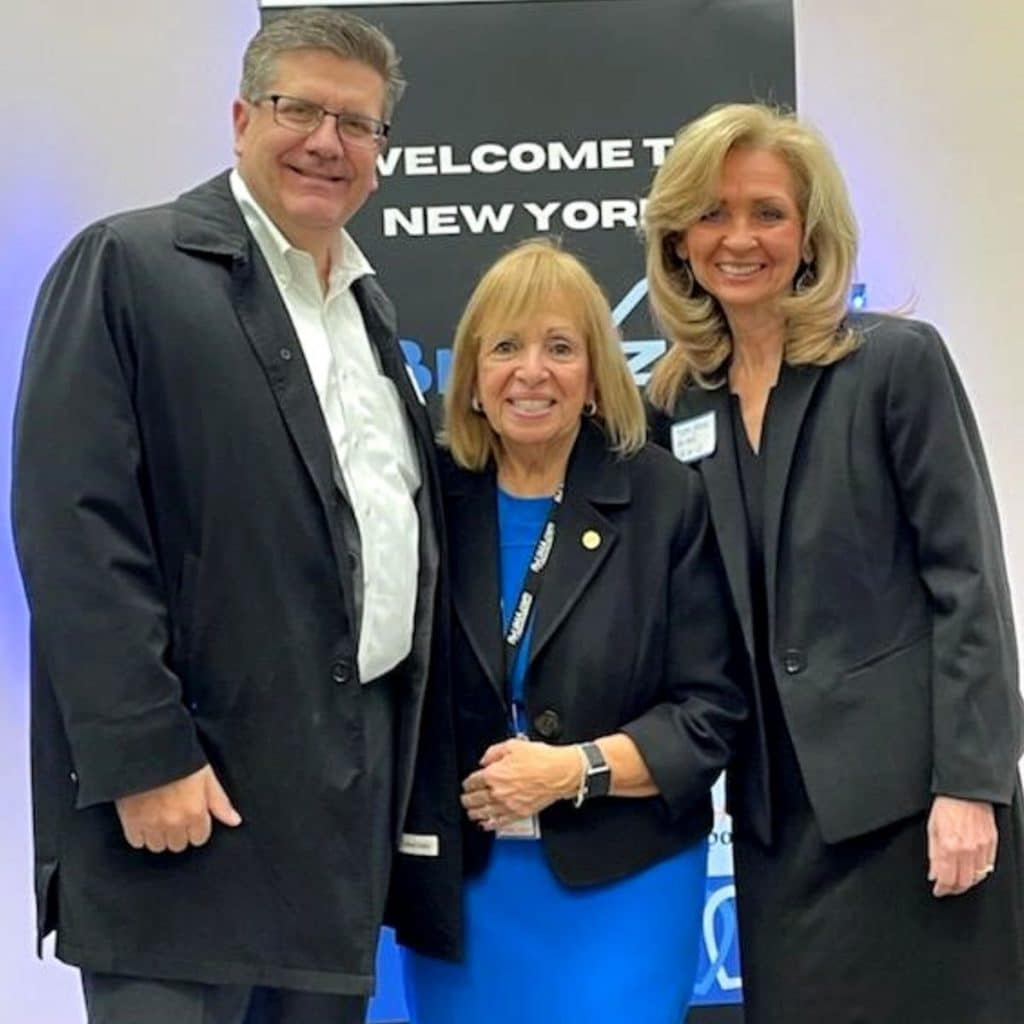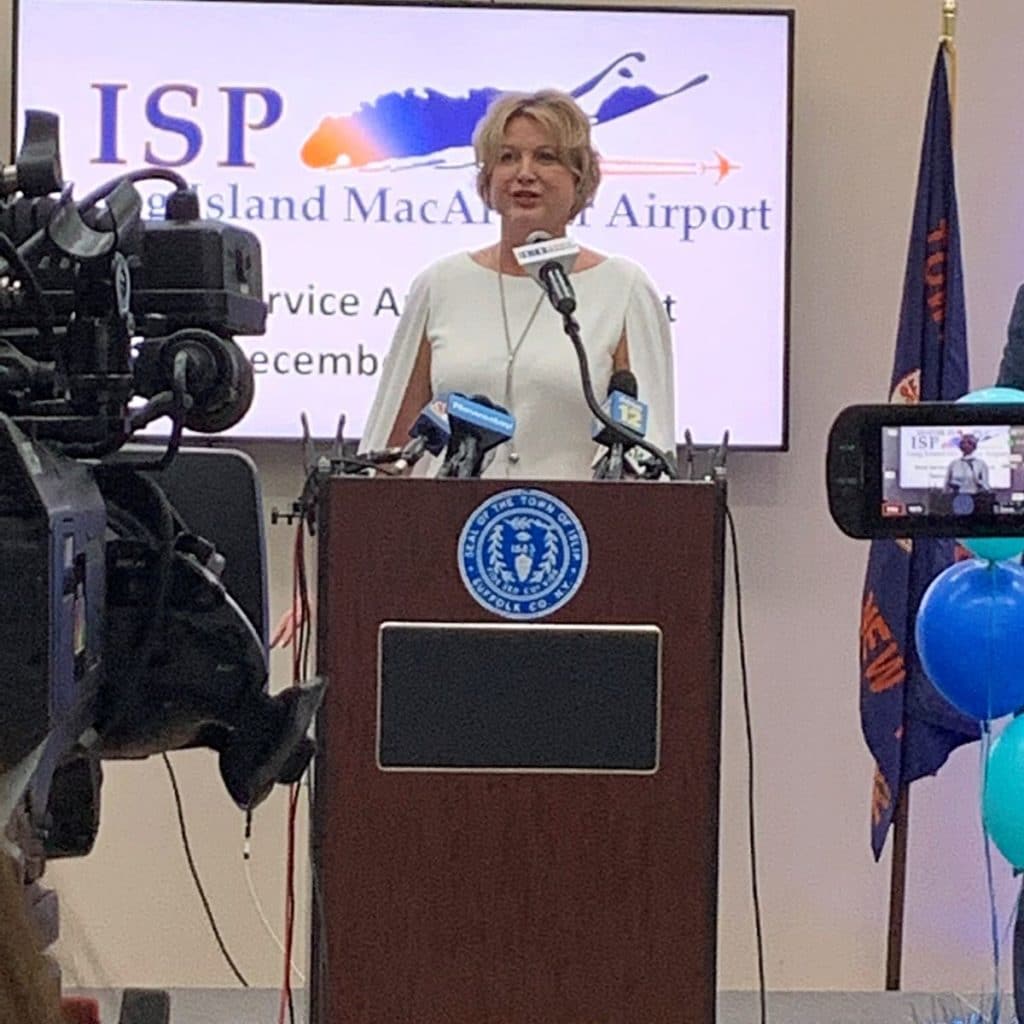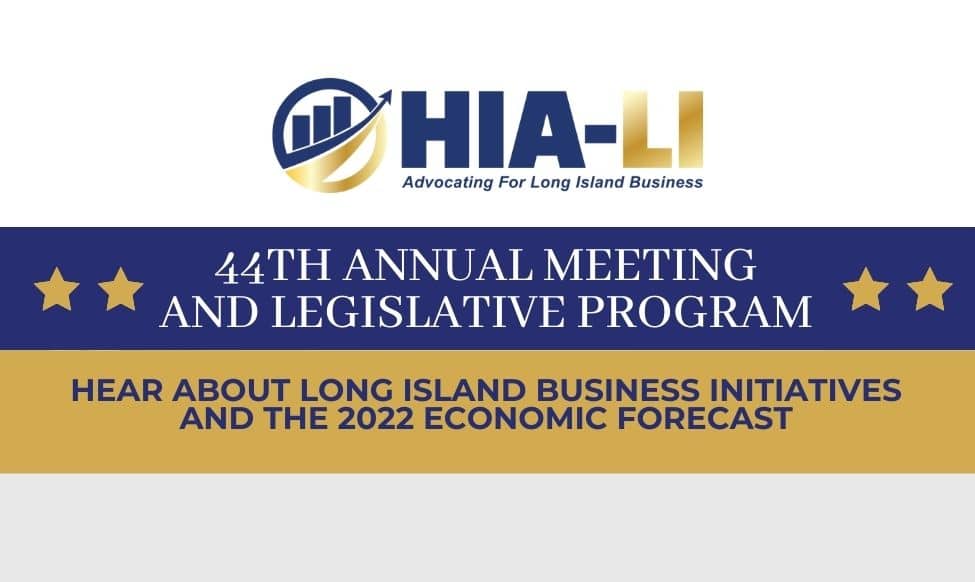Recent HIA-LI Survey Spearheaded by Campolo Highlights Exponential Revenue Potential of Long Island’s Hometown Airport
CMM’s Joe Campolo was on hand at a December 6 press conference announcing Breeze Airways’ new home at Long Island MacArthur Airport. Starting in February 2022, the airline – founded by David Neeleman (who previously cofounded multiple airlines including JetBlue) – will offer nonstop flights to Norfolk, Virginia and Charleston, South Carolina. Touting Breeze as the “Seriously Nice™” airline that “gets you there twice as fast at half the price,” Neeleman described Breeze as “a technology company that happens to fly planes.” The fact that the tech-savvy airline chose MacArthur as its first New York airport is a testament to the power and support of the Long Island business community.
This support was on full display this past summer in the robust response from the business community to HIA-LI’s Long Island MacArthur Airport Survey, spearheaded by Campolo and his team at CMM. For many years, the business community has lamented the lack of direct flight destination options from MacArthur Airport. To that end, the goal of the HIA-LI survey was to showcase support for the airport and help attract new airlines, paving the way for new travel options for Long Islanders.
The survey results are staggering, displaying the potential untapped revenue that more nonstop destinations could bring to MacArthur and the region. After providing their annual business travel budgets, respondents of the survey said that the addition of more nonstop flights would increase their overall travel spend at MacArthur from 36.2% to 78.8%. The survey also found that when taken together, Nassau and Suffolk Counties hold the potential to generate as much as $1.1 billion in revenue for the airport.
The survey stemmed from Joe Campolo’s involvement with the MacArthur Airport Advisory Board, to which he was invited by Town of Islip Supervisor Angie Carpenter after his work on the HIA-LI’s Long Island Innovation Park at Hauppauge (LI-IPH) Task Force caught her attention. Recognizing the Innovation Park as Long Island’s hidden economic gem, Campolo has successfully led efforts to quantify the economic impact of the LI-IPH and magnify the LI-IPH’s role in Long Island economic development, putting the LI-IPH on the map for future development projects.
“The addition of Breeze Airways at MacArthur Airport provides a tremendous advantage for regional development and is such a win for the business community,” said President & CEO of HIA-LI, Terri Alessi-Miceli. “HIA-LI is proud to support initiatives like the LI-IPH Task Force and the airport survey to help business survive and thrive now and in the future.” “MacArthur Airport is a critical asset to the Long Island business community. When the data from the survey started pouring in, it was clear that the business community strongly supports the airport while recognizing the need for more nonstop travel destinations,” said Campolo. “Now, the addition of Breeze Airways at MacArthur Airport will open up more possibilities for the Long Island region and opportunities for further economic advancement.”












